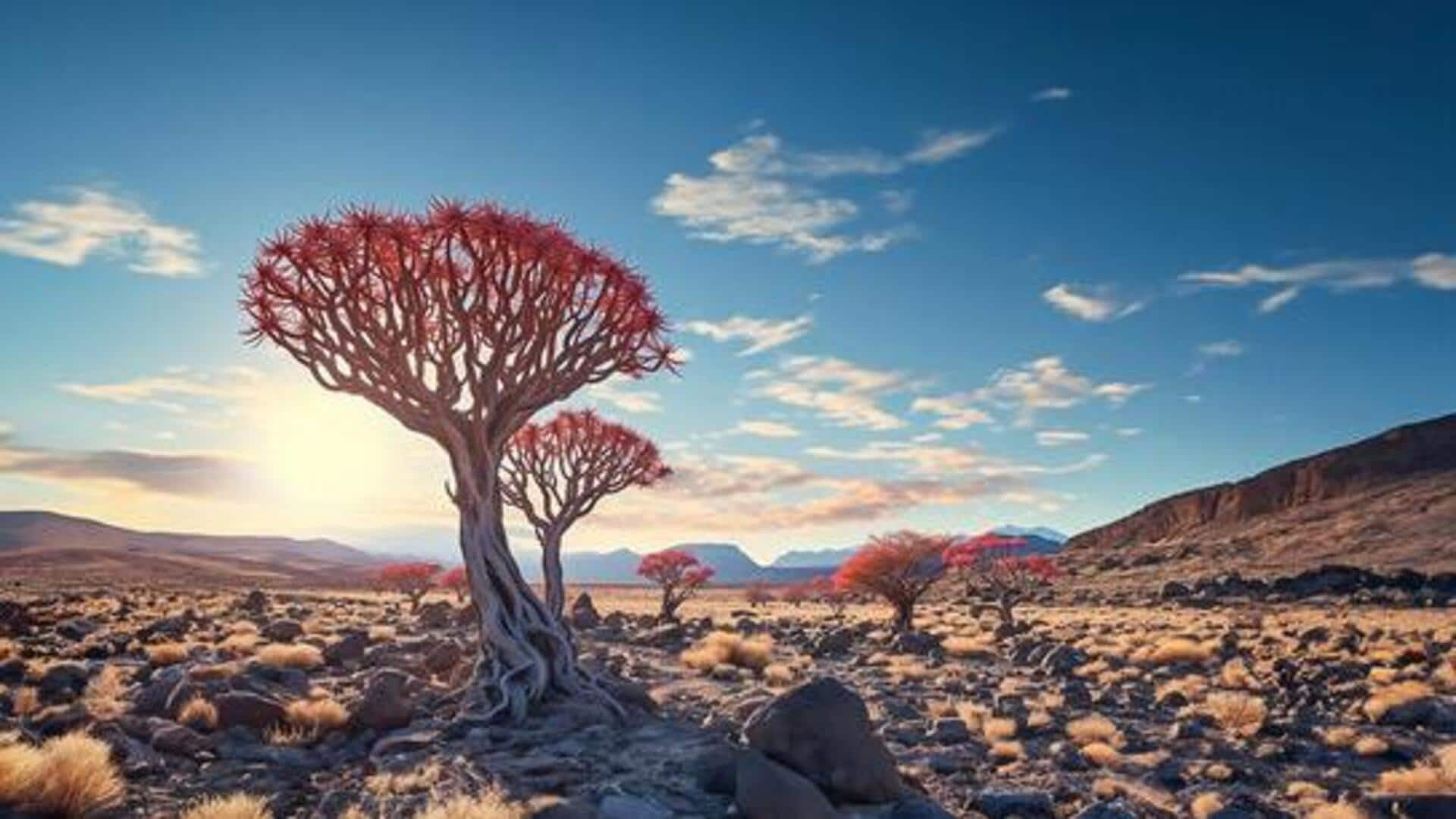
Exploring Namibia's Quiver Tree forests
What's the story
Namibia's otherworldly Quiver Tree Forests are a hidden gem for adventure travelers seeking a truly unique experience.
These forests are defined by the Aloe dichotoma, a species of aloe that reaches skyward, creating natural sculptures that captivate the imagination.
This article explores the magic of these forests and provides tips for those looking to experience it for themselves.
Timing
Best time to visit
The best time to visit the Quiver Tree Forests is during the winter months, from June to August.
This is when temperatures are cooler, making it more pleasant to explore.
Plus, this is the time when the quiver trees themselves burst into bloom with vibrant yellow flowers, adding even more beauty to the landscape.
Travel tips
Getting there
Getting to the Quiver Tree Forests, located near Keetmanshoop in southern Namibia, is part of the adventure.
The easiest route involves flying into Hosea Kutako International Airport in Windhoek, followed by a car rental for a scenic five-hour road trip.
This trip offers a blend of convenience and immersion in Namibia's beautiful landscapes.
Packing essentials
What to bring
When packing for your trip to the Quiver Tree Forests, essentials include sunscreen, water bottles, comfortable walking shoes, and a camera.
The sun can be intense even during winter months, so protection is key.
Also, consider bringing binoculars for bird watching, as the area is home to various bird species.
Capturing beauty
Photography tips
The distinctive silhouettes of quiver trees set against Namibia's pristine skies offer a dreamlike setting for photography enthusiasts.
For optimal results, visit during golden hour—just after sunrise or before sunset—when the soft light transforms the landscape into a tranquil tableau of mesmerizing silhouettes.
And, don't forget to carry a tripod for capturing those magical night shots under starlit skies.
Conservation awareness
Respectful exploration
When visiting these ancient natural wonders, it's important to be mindful of their fragility.
Stay on designated trails and refrain from touching or climbing on the trees as they are protected species in Namibia.
Your consciousness and respect contribute to the preservation of these marvels for future generations to admire.